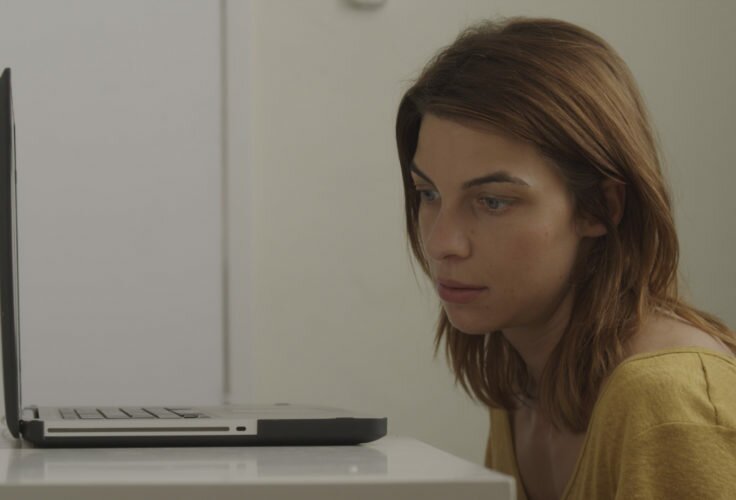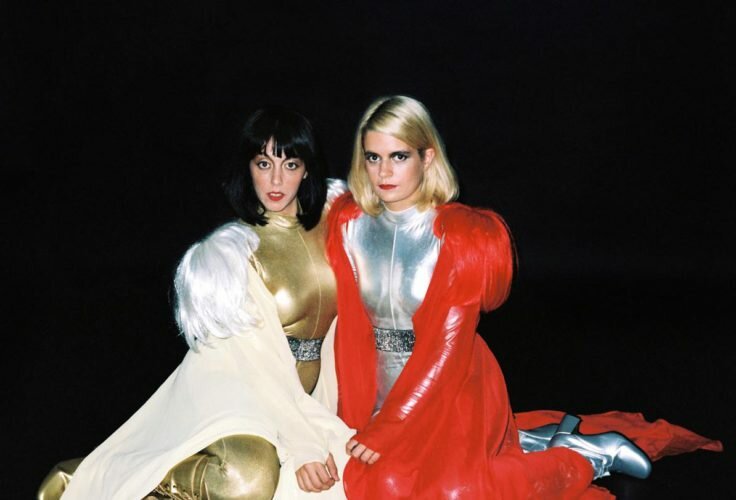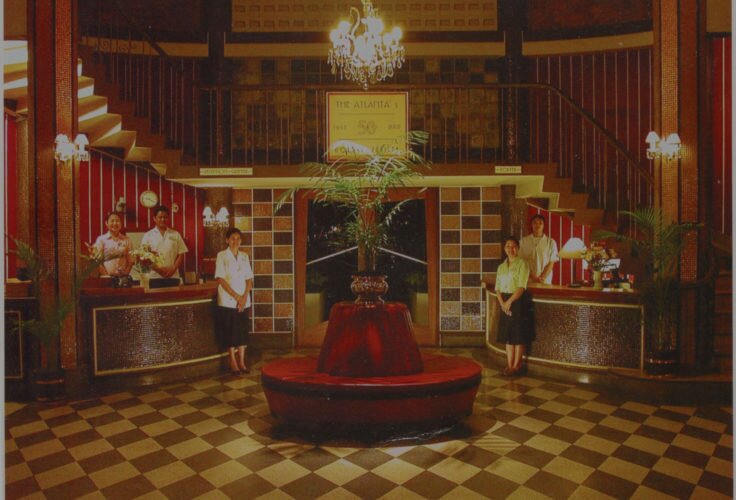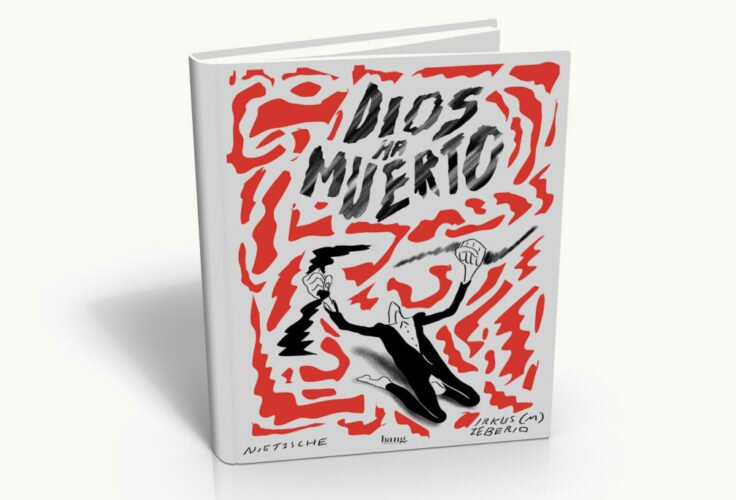We’ve already seen in Stranger Things that during the eighties tweens and teenagers engaged in role-playing games. Mar Calpena did so too; this is her memoir.
TV killed

Even today, Julia Child can be considered a rara avis among TV cooks

Without making too much noise, Arguiñano has been getting enviable ratings for twenty-five years: is he a kind of Jim Henson for cooking shows?’

Jamie Oliver and his studied genuineness
★
★
★
★
One of the first times I worked in a TV programme, a morning magazine, the producer suggested getting rid of the cooking section “because people don’t like to see how people make a mess with food”. The anecdote dates itself: it was the nineties.
What has happened in these twenty years for cuisine to have gone from a mere second-rate filling space in gossip shows to occupy the prime time? How have cooks become rock stars? Can we learn to cook through the small screen? And, above all, why do we like watching cooking programmes so much? Let’s go step by step because although these four questions are related, they don’t have an only answer.
Decades of change
When we talk about contemporary cuisine, there arises a curious simplifying effect that sets the first stone in 1 A. A. (that is, after Ferran Adrià), and it’s true that the haute cuisine boom owes him much. But cooking programmes have been featured on TV since the first years of the medium and partly as a legacy of the shows devoted to housewives that already existed on the radio. Kathleen Collins, author of , affirms that cooking programmes are a reflection of our homely lives. But this idea is preceded by another: “Television is also entertainment”, says Jordi Rosell, who directed the MasterChef and MasterChef Junior first seasons. “We watch TV for things to happen. The first person to have this very clear was Karlos Arguiñano, who naturally witnessed how his popularity grew the funnier he got. He found a format that was ideal for him and that, without being strictly an entertaining show, you could have on in the background while you were doing something else. After him, the second one to understand the business was Sergi Arola. He grasped before anyone else that entertainment was what brought people ti haute cuisine”. The rest of the world has undergone similar processes. Bookseller and cultural critic Jónatan Sark has regularly written about the history of cooking shows on TV and thinks that part of their success is due to the appearance of a new series of American formats that were originated by the demands of the US TV audience. “A lot of what we see now has to do with the change undergone by TV channel Food Network when being part of the basic package of most cable TV companies in America ceased to be profitable for them. The board of directors decided that the audience was sick of these kind of programmes and that the average American hated watching Anthony Bourdain eating escargots in France, and that what they needed was going back to meat, fried stuff and presenters that were perceived as genuine”. Besides, the boom of different formats in other countries, such as Japanese contest Iron Chef (something like a Takeshi’s Castle but in the kitchen) or those devoted to coaching (like Gordon Ramsay’s Kitchen Nightmares, adapted here as Pesadilla en la cocina) coincided with what was happening too off the screen.
“I think the success is due to a kind of a star conjunction. Cuisine is fashionable now. Chefs have become media stars. Cooking has gone from being a not very desirable profession to become a job with a status, and that has happened at an amazing speed (In twenty years?). On TV only, there have appeared very addictive formats such as MasterChef, Top Chef or Pesadilla that have turned it all into an entertaining show and, besides, have found their best ally in social networks. But if you ask me for a deeper and most serious reason, I think it all goes down to the fact that people cook less and less. I have the feeling that we like being cooking voyeurs more and more, and less cooks”, Mikel Iturriaga, says gastronomic journalist and director of blog El Comidista for El País. Sark thinks the same: “Cooking programmes have an aspirational side to them, but also an everyday life side. We all eat every day, we all feel qualifies to judge how the rest of the people cook. For this reason, a cooking programme is more attractive than a DIY one, although their formats can be very similar. And that’s why right now styling makeover shows are having huge success now, because we all dress every day and think we know something about it, even if we don’t”. However, the viewer’s knowledge, whether h/she applies it to his/her daily life or not, is there. Rosell illustrates this with an anecdote: “A few years ago I directed a TV3 show, La cuina de l’Isma, that became quite popular. The battle back then was that no recipe should include more than ten ingredients. The audience wanted good things that were easy to make. My colleagues that are now working for MasterChef tell me that now candidates go to castings and they do Adrià style spherifications!”

A Simpsonised Adrià was the cover of Comida para pensar, the book that Vicente Todolí devoted to the cook’s artistic side
★
★
★
★
★

No, it’s not the Power Rangers. It’s Iron Chef!

The MasterChef contestants doing a Lord of the Flies

It isn’t easy being Gordon Ramsay (or Alberto Chicote) and having to eat certain things because the script makes you
★
★
★
★
★
The cook as rock star: foodiepocalypsis now
The fact that some cooks have become rock stars isn’t strictly new, and if Chicote’s scolding to the mediocre restaurant owners featured in Pesadilla en la cocina or the “Yes, chef” uttered by MasterChef contestants remind us of the instructor sergeant of Full Metal Jacket might be because Auguste Escoffier, the father of the new organisation of professional kitchens, created the current system which is highly hierarchical and full of testosterone, due to his participation in the French-Prussian war. “Notice that society veneered cooks before they did so with television”, adds Jónatan Sark, “Arzak wasn’t discovered by the telly. TV cooking programmes dealt mainly with homely life. Despite the differences, the programmes of Julia Child, Elena Santonja and Karlos Arguiñano still belong to countertop shows”. At the end of the nineties and beginning ot the 2000s, coinciding with the haute cuisine boom, another social figure starts taking shape: the foodie, which is the translation to the world if cuisine of the “bobos” described by 2000 book Bobos in Paradise, by David Brooks. Those bobos, half bohemian, half bourgeois, proto-hipsters, were defined by their horror of ostentation, but they were ready to spend a lot of money (or precious free time) in things they considered necessary or cultural, from an industrial Kitchenaid cooking robot to a vinyl turntable or a collection of Astroboy figures, all within the frame of a nostalgia to go back to anything natural and authentic, what lead them to make their own cupcakes, elaborate their own beer, or even breed chickens in the backyard Portlandia style. Bobos and foodies find the natural space for their tastes on the Internet, where they can contact other similar beings, self-taught experts (though most of the time their neither self-taught nor experts). Their reflection on TV is the boy next door: from Jamie Oliver to Jordi Cruz, a young middle class urban young man, a gentrified version of himself (and we highlight “him,” because women role-models in TV cooking shows are more varied but also more traditional. Even for today’s standards, Julia Child is an anomaly).
With the boy next door, and as a reaction against the la ultra-precision and neatness of the avant-garde practised by almost scientists such Ferran Adrià or Heston Blumenthal, another figure appears: the rascal cook. Anthony Bourdain himself, who had so much criticised the boring stars from Food Network, has a lot to blame for this, because although he might not play the premier league of cuisine, his book (also from 2000), in which he told in a Hunter S. Thompson style his life among kitchens and drugs, gave way to the stereotype of a Keith Richards sort of cook. Thanks to Confessions of a chef, a generation of gastronomic journalists –sometimes without Bourdain’s solid theoretical grounds– started to defend the literary and playful side to the genre, what they decided to call rock’n’roll (what we could call “hedonism,” but said in a more street fashion). Some cooks also found themselves liberated from the pristine image of their profession. Sergi Arola appeared covered in tattoos and playing guitar with Franz Ferdinand; Jordi Cruz and Paco Roncero were on the cover of Men’s Health like modern Spartans, and David Muñoz, Dabiz, “the one with the Mohawk”, dressed his cooks like psychiatric wards. Mikel Iturriaga says about this phenomenon that he loves “cooks to becomes media figures, as long as they don’t lose it and think they’re rock stars, or even worse, food philosophers! Anything that serves the purpose of attracting attention towards eating well is positive; all that replicates megalomaniac and elitist attitudes that we’ve seen in people from other spheres is the worst thing. And both things happen in the cuisine world.”

Jordi Cruz is the digital evolution of the boy next door turned rock star cook
★
★
★
★

Anthony Bourdain is to the cuisine world what Iggy Pop to music: working ethics, iguana aesthetics, and artist’s soul
Hungry for TV
What do we get out of cooking programmes? Can we learn to cook by watching them? Iturriaga says: “to me, the best shows are the ones that entertain you but also teach you something, and in this sense, I prefer contests in which you also learn something about cooking or cuisine. But I don’t think we should insist too much in wanting to have this kind of shows turn into tutorials for cooking lovers: the average audience would switch off”.
“That’s not our mission,” says Rosell, “but contestants do learn to cook. For us it’s important to show how they evolve, that’s why they’re given cooking lessons off-screen”. Because, now we’re at it, we should point out that cooking programmes DO follow a script, what happens is that if it’s well written it should seem invisible, and a lot of the times it’s done at the editing room, taking out boring parts and condensing conversations and moments. “We knew that in order to make a show attractive there needed to be some kind of conflict. The moment you put contestants to cook in a time trial, something quite artificial, that causes tension. They live away from their usual surrounding, and although this isn’t Big Brother, this provokes that whatever happens at the show becomes a mountain. People cry when they’ve dropped a soufflé because in that moment the soufflé is the centre of their universe. And we need to control the rhythm. You can’t make them cook a recipe that is too linear, it needs to include some turns, with critical moments in which they risk to make mistake. You need to have good advisors and rehearse a lot in the set without the contestants, because each oven is different and we need to make sure that they all work more or less in the same way. And above all, everything needs to be explained very well, because the audience cannot smell or taste the food in front of them on the screen, and they can’t identify when something’s wrong just by looking, as judges can. We’re not here to teach, but we need to be very didactic to do a good TV show.”

Sergi Arola has never been scared of bleeding statements

Yes, Dabiz is one of those that say, “This dish needs some rock’n’roll”



















